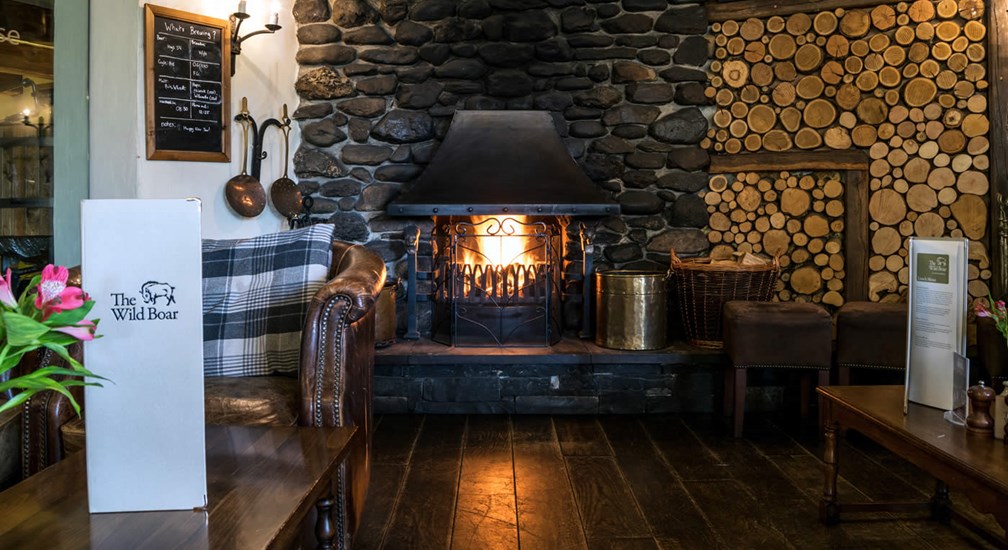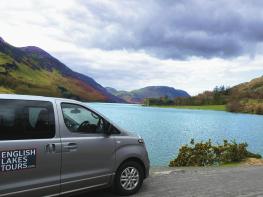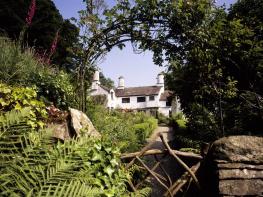With a charming riverside beer garden, the Eagle and Child bed and breakfast inn is a few…
Staveley's Mill Yard and Craggy Wood

How wood and water power brought industry to Staveley.
4 miles (6.4kms)
About the walk
It’s no coincidence that this walk starts and finishes by the modern-day buildings of Staveley Mill Yard. The history of the village and its surrounding area is closely linked to the fortunes of the mills that developed on the banks of the River Kent – at its peak, there were 30 mills drawing power from the river. There may have been a fulling mill here, processing local wool, as early as the 14th century, but it was wood that really drove the industry on. In the 1820s local entrepreneur Thomas Taylor realised that the opening of the Lancaster Canal to nearby Kendal presented an opportunity. The booming Lancashire cotton mills needed vast quantities of bobbins – reels and spindles. Staveley had woodlands and water power to drive machines, and soon Taylor had 24 lathes and four saws, taking power from a waterwheel. Taylor himself didn’t live long enough to enjoy the prosperity, succumbing to the cholera epidemic of 1832, but the mill went from strength to strength. In 1853 Chadwick’s of Bolton bought the mill and adjacent land, widened the River Kent and built a new weir (the one you can see today). Edwin Brockbank, himself the son of a bobbin turner became owner of the mill in 1946 and the site is still owned by the third generation of Brockbanks, although all production here ceased in the 1990s.
The mill yard reborn
So far, the narrative is typical of British industrial growth and decline, but the story of the mill site doesn’t end there. The coppice sheds, where wood was stacked and dried, now house a number of light industrial units. Other parts of the mill have been redeveloped, and, as well as the Hawkshead Brewery, outdoor clothing suppliers, artisan food and wine outlets, cafés and offices have moved in. Up to 15 per cent of the yard’s power still comes from turbines driven by the waters of the River Kent. The coppiced woods across the river are now managed by wildlife charities and the National Park Authority, and Staveley has been reinvented as a thoroughly modern, sustainable community.
Walk directions
Walk down Main Street, heading southeast to reach the old tower of St Margaret’s Church. A footpath runs down the side of the churchyard and along the back of the Mill Yard. At the river, cross the bridge and follow the path beyond to the right. Turn left, at the corner of the wall, and go through a kissing gate between farm buildings. Continue straight ahead through a gate to the right of a barn, and keep a wall on your left as you pass through trees and another gate to a minor road. Turn right to a junction.
Turn left up the hill and, at a right-hand bend, dodge left into Craggy Wood. The single path is obvious and first takes you parallel with the road before swinging steeply up to the left towards the crest of the woods. At the highest point a magnificent view is revealed of the fells around Kentmere. Stay with the path through the woods as it undulates, trending downhill slightly, to emerge suddenly at a stile into a field.
Turn right here, through a gap. Keep a wall on your left and aim for a stile that appears on the skyline. Beyond this, maintain your direction across the field to find a ladder stile. Continue down the next field with a wall on your left, to a stile, beyond which the wall is now on your right. Keep to this as you descend to Littlewood Farm. Approaching the farm, follow the fence left then go through a gate into the farmyard.
Now join a lane and turn right. Go through a gate and continue on this minor road until a footpath sign (‘Potter Tarn’) points left down a farm access track. Walk down the track, then through a gate, following the arrow across the yard and through another gate to pass in front of the farmhouse. Now a short stretch of enclosed track crosses a tiny beck. Turn right alongside it, then emerge through a gate into a field. The path follows the beck before heading away alongside a plantation then up a rough field to a gate. Turn right beyond this to join a descending track, ignoring a path left to Potter Tarn, to Side House.
Join the access track to cross the beck then follow the track through a couple of gates. Keep straight ahead at a junction and descend to meet a tarmac lane at a bend. Keep ahead, down the road, to a T-junction in the valley bottom.
Turn right along this for 0.25 miles (400m). By the entrance to a sewage treatment works, take a footpath across a paddock then continue to a gate by the river. Follow the obvious meadow path to a ladder stile. Bear right from this, then left after some hawthorn trees to a gate under trees in the far corner. An enclosed lane now leads you in front of Staveley Park. Go through a gate and straight ahead to rejoin the outward route along the riverside and back into the town.
Additional information
Woodland and grassy paths and tracks, road, 6 stiles
Village, woods and fields
Fields grazed by sheep, otherwise reasonably suitable for dogs
OS Explorer OL7 The English Lakes (SE)
On-street parking around Staveley Main Street, or in Mill Yard
Beside bus stop in Abbey Square, Staveley
WALKING IN SAFETY
Read our tips to look after yourself and the environment when following this walk.
Find out more
Also in the area
About the area
Discover Cumbria
Cumbria's rugged yet beautiful landscape is best known for the Lake District National Park that sits within its boundaries. It’s famous for Lake Windermere, England’s largest lake, and Derwent Water, ‘Queen of the English Lakes'. This beautiful countryside once inspired William Wordsworth and his home, Dove Cottage, in Grasmere is a popular museum. Another place of literary pilgrimage is Hill Top, home of Beatrix Potter, located near Windermere. Tom Kitten, Samuel Whiskers and Jemima Puddleduck were all created here.
Much of Cumbria is often overlooked in favour of the Lake Distirct. In the south, the Lune Valley remains as lovely as it was when Turner painted it. The coast is also a secret gem. With its wide cobbled streets, spacious green and views of the Solway Firth, Silloth is a fine Victorian seaside resort. Other towns along this coastline include Whitehaven, Workington and Maryport. Carlisle is well worth a look – once a Roman camp, its red-brick cathedral dates back to the early 12th century and its 11th-century castle was built by William Rufus.
Nearby stays
Restaurants and Pubs
Nearby experiences
Recommended things to do
Why choose Rated Trips?
Your trusted guide to rated places across the UK
The best coverage
Discover more than 15,000 professionally rated places to stay, eat and visit from across the UK and Ireland.
Quality assured
Choose a place to stay safe in the knowledge that it has been expertly assessed by trained assessors.
Plan your next trip
Search by location or the type of place you're visiting to find your next ideal holiday experience.
Travel inspiration
Read our articles, city guides and recommended things to do for inspiration. We're here to help you explore the UK.













